Abstract
AIMS--To evaluate the accuracy and reproducibility of multipoint identification schemes in a multicentre trial. METHODS--Forty two strains of Enterobacteriaceae were distributed to 22 laboratories for identification by routine multipoint methods. Analysis of results enabled inter- and intralaboratory reproducibility of a variety of tests, and the ability of laboratories to identify individual organisms to be determined. RESULTS--Interlaboratory reproducibility of most of the biochemical tests was acceptable. The least reproducible tests, both within and between laboratories, were citrate utilisation, production of urease and beta galactosidase, detection of motility, and decarboxylation of lysine and ornithine. Inconsistent results for these tests were often associated with misidentified strains. Most laboratories performed identifications satisfactorily. Most isolates (72.1%) were identified correctly to species level; 9.6% were incorrectly identified, and 6.4% could not be identified at all. The most difficult organisms to identify were Citrobacter freundii, Enterobacter cloacae, Hafnia alvei and Aeromonas hydrophila. Strains of Enterobacter, Serratia sp, and Providencia sp were difficult to speciate. Several laboratories could not identify organisms exhibiting at least one atypical biochemical reaction. CONCLUSION--This study emphasises the need for quality control of media and reagents for multipoint identification of Gram negative enteric bacilli.
Full text
PDF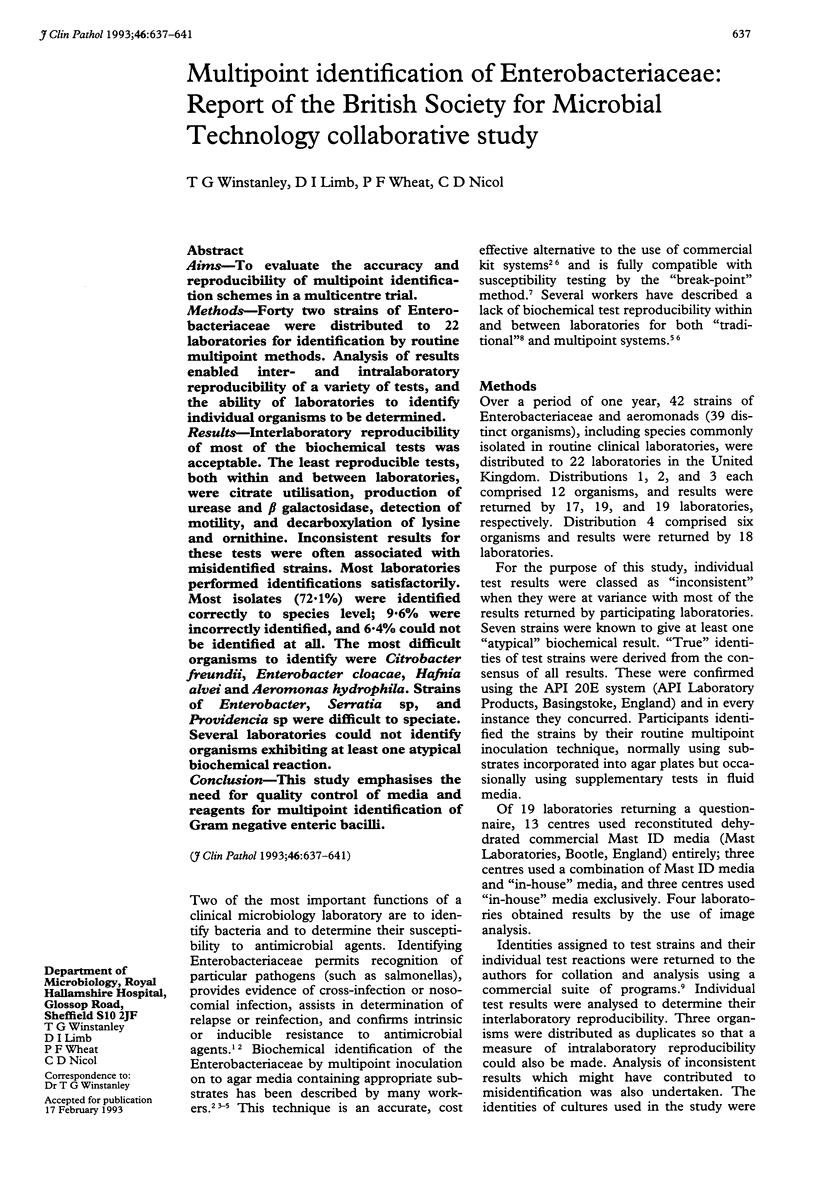
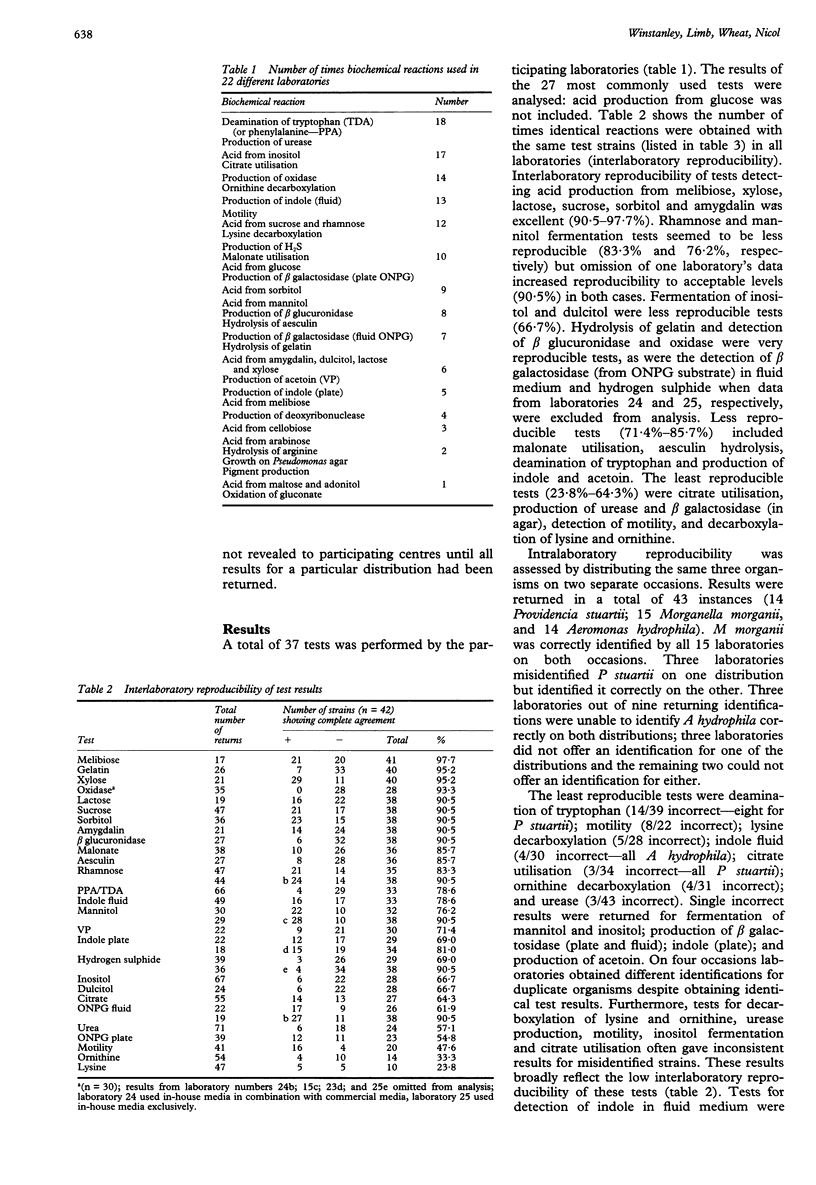
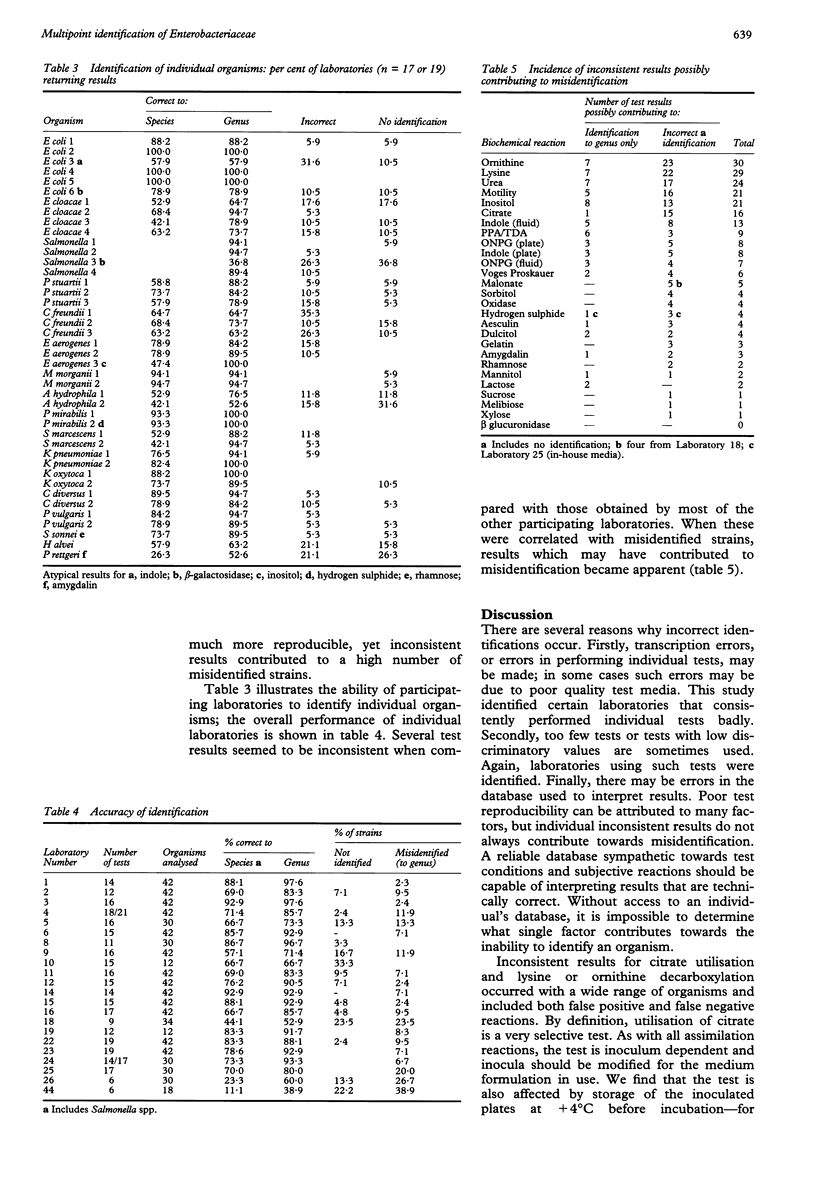
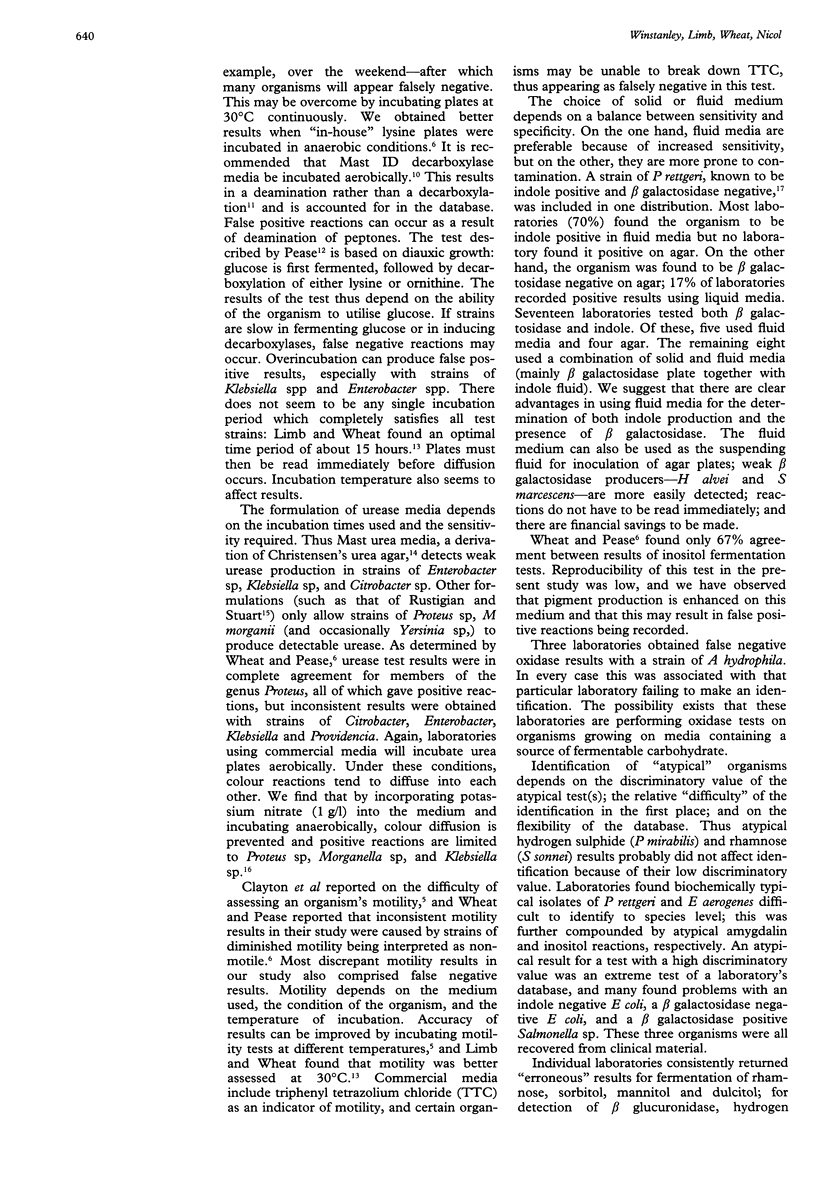
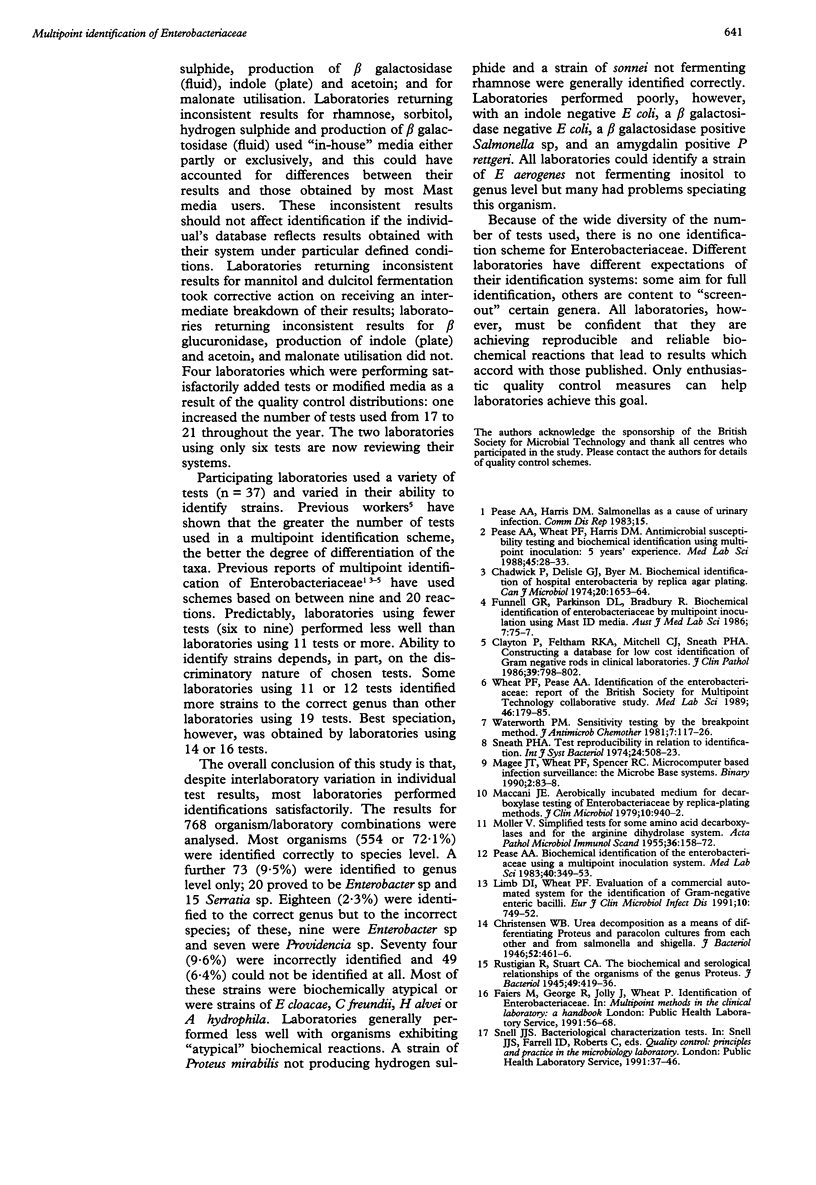
Selected References
These references are in PubMed. This may not be the complete list of references from this article.
- Chadwick P., Delisle G. J., Byer M. Biochemical identification of hospital enterobacteria by replica agar plating. Can J Microbiol. 1974 Dec;20(12):1653–1664. doi: 10.1139/m74-257. [DOI] [PubMed] [Google Scholar]
- Christensen W. B. Urea Decomposition as a Means of Differentiating Proteus and Paracolon Cultures from Each Other and from Salmonella and Shigella Types. J Bacteriol. 1946 Oct;52(4):461–466. doi: 10.1128/jb.52.4.461-466.1946. [DOI] [PMC free article] [PubMed] [Google Scholar]
- Clayton P., Feltham R. K., Mitchell C. J., Sneath P. H. Constructing a database for low cost identification of gram negative rods in clinical laboratories. J Clin Pathol. 1986 Jul;39(7):798–802. doi: 10.1136/jcp.39.7.798. [DOI] [PMC free article] [PubMed] [Google Scholar]
- Limb D. I., Wheat P. F. Evaluation of a commercial automated system for the identification of gram-negative enteric bacilli. Eur J Clin Microbiol Infect Dis. 1991 Sep;10(9):749–752. doi: 10.1007/BF01972502. [DOI] [PubMed] [Google Scholar]
- Maccani J. E. Aerobically incubated medium for decarboxylase testing of Enterobacteriaceae by replica-plating methods. J Clin Microbiol. 1979 Dec;10(6):940–942. doi: 10.1128/jcm.10.6.940-942.1979. [DOI] [PMC free article] [PubMed] [Google Scholar]
- MØLLER V. Simplified tests for some amino acid decarboxylases and for the arginine dihydrolase system. Acta Pathol Microbiol Scand. 1955;36(2):158–172. doi: 10.1111/j.1699-0463.1955.tb04583.x. [DOI] [PubMed] [Google Scholar]
- Pease A. A. Biochemical identification of the enterobacteriaciae using a multipoint inoculation system. Med Lab Sci. 1983 Oct;40(4):349–353. [PubMed] [Google Scholar]
- Pease A. A., Wheat P. F., Harris D. M. Antimicrobial susceptibility testing and biochemical identification using multipoint inoculation: 5 years' experience. Med Lab Sci. 1988 Jan;45(1):28–33. [PubMed] [Google Scholar]
- Rustigian R., Stuart C. A. The Biochemical and Serological Relationships of the Organisms of the Genus Proteus. J Bacteriol. 1945 May;49(5):419–436. doi: 10.1128/jb.49.5.419-436.1945. [DOI] [PMC free article] [PubMed] [Google Scholar]
- Wheat P. F., Pease A. A. Identification of Enterobacteriaceae: report of the British Society for Multipoint Technology collaborative study. Med Lab Sci. 1989 Jul;46(3):179–185. [PubMed] [Google Scholar]


